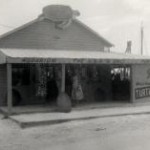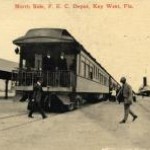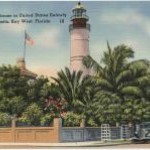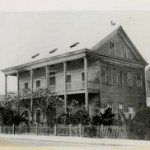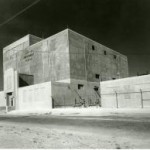Historic District
Turtle Kraals Restaurant
This rustic structure was built in the early 1950s as an outgrowth of the turtle industry. It was one of the few places in the country where tourists, for a 13 cent admission fee, were able to experience turtle trawlers unloading turtles for market. They witnessed the daily catch placed in turtle kraals and the workings of the soup cannery. It was part gift shop and visitor attraction. The building holds the distinction of being considered the first Historic Seaport attraction.
Flagler's Train Terminal
Henry Flagler's train yard for the Over-Sea Railroad had three piers jutting from the end of Trumbo Road were key to Flagler's vision of having his railway end in Cuba. Ships, docked at the pier closest to the new ferry docks, were used to transport trains to and from Cuba. Ferries were used to carry cars and passengers. The terminal was the railway hub connecting the Keys to the mainland and Cuba to the U.S.
Lighthouse & Keepers Quarters
In 1823, the "U.S. Navy established a base in Key West and the need for a lighthouse became evident. Erecting a warning beacon was essential to reduce shipwrecks on the treacherous reefs surrounding the island. By the mid-1800s there was an average of one wreck per week. The first lighthouse was constructed in 1825 and washed out to sea by the 1846 hurricane. The current structure, built in 1847, stands 14' above sea level with a Keeper's Quarter added in 1887.
Richard Kemp House
The Kemp family was one of the early settlers of Key West. Built on land purchased in 1845, this house replaced the family home destroyed by the Great Fire of 1886. It is the purest example of classical revival Key West-Bahaman style architecture. Richard Kemp is known for classifying the Ridley turtle recognized as Kemp's Turtle today. He introduced Key West sponges to the New York market starting a 50 year long local industry that dominated the U.S. sponge market for decades.
Steam Plant
The Steam Plant's facade endures as an example of Art Deco design that was popularized during the Great Depression. It is one of the few art deco structures in Key West. Streamline Modern was a reaction to Victorian building ornamentation that was the predominant building style for decades. The new style embraced simple lines and aerodynamic curves. It was built by the city in 1951 on new land that industrialist Henry Flagler created for the train depot of his Over-Sea Railroad.
